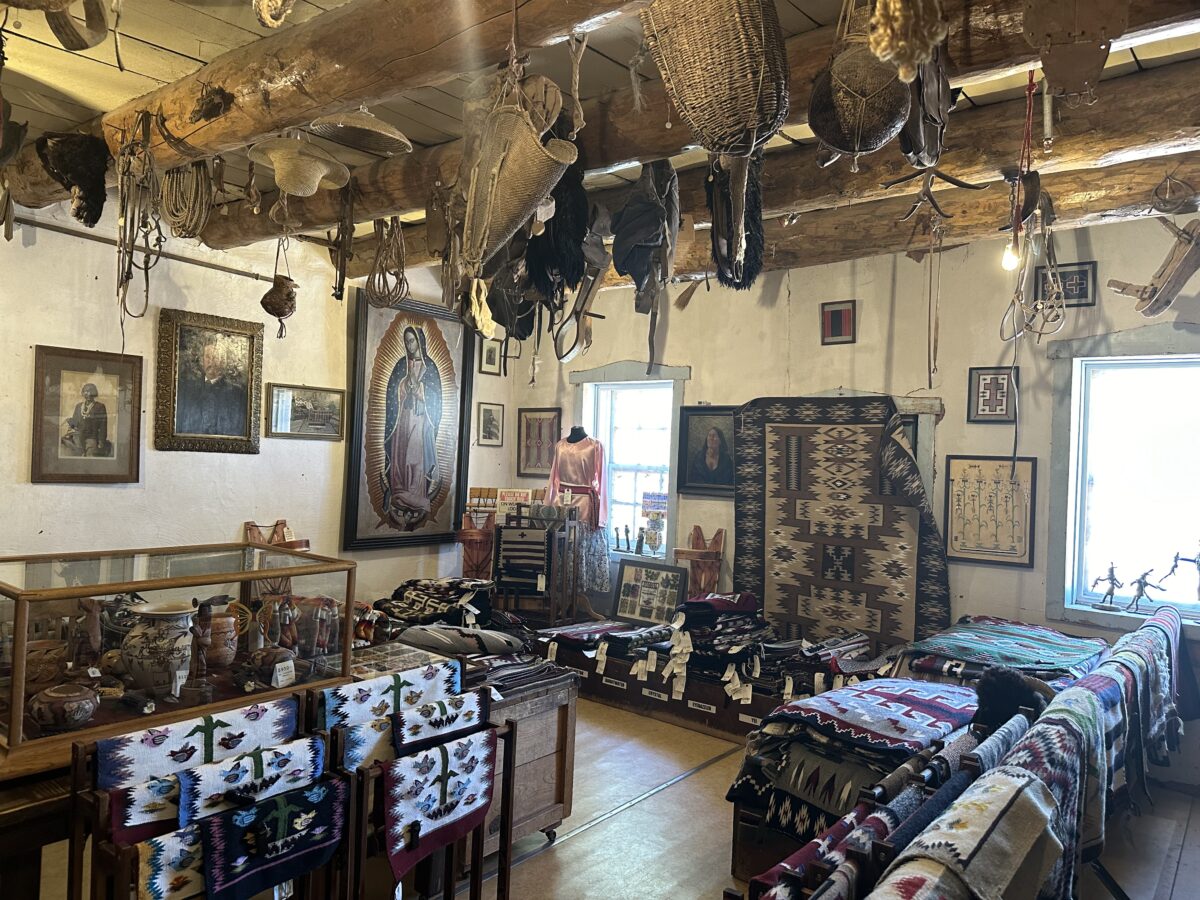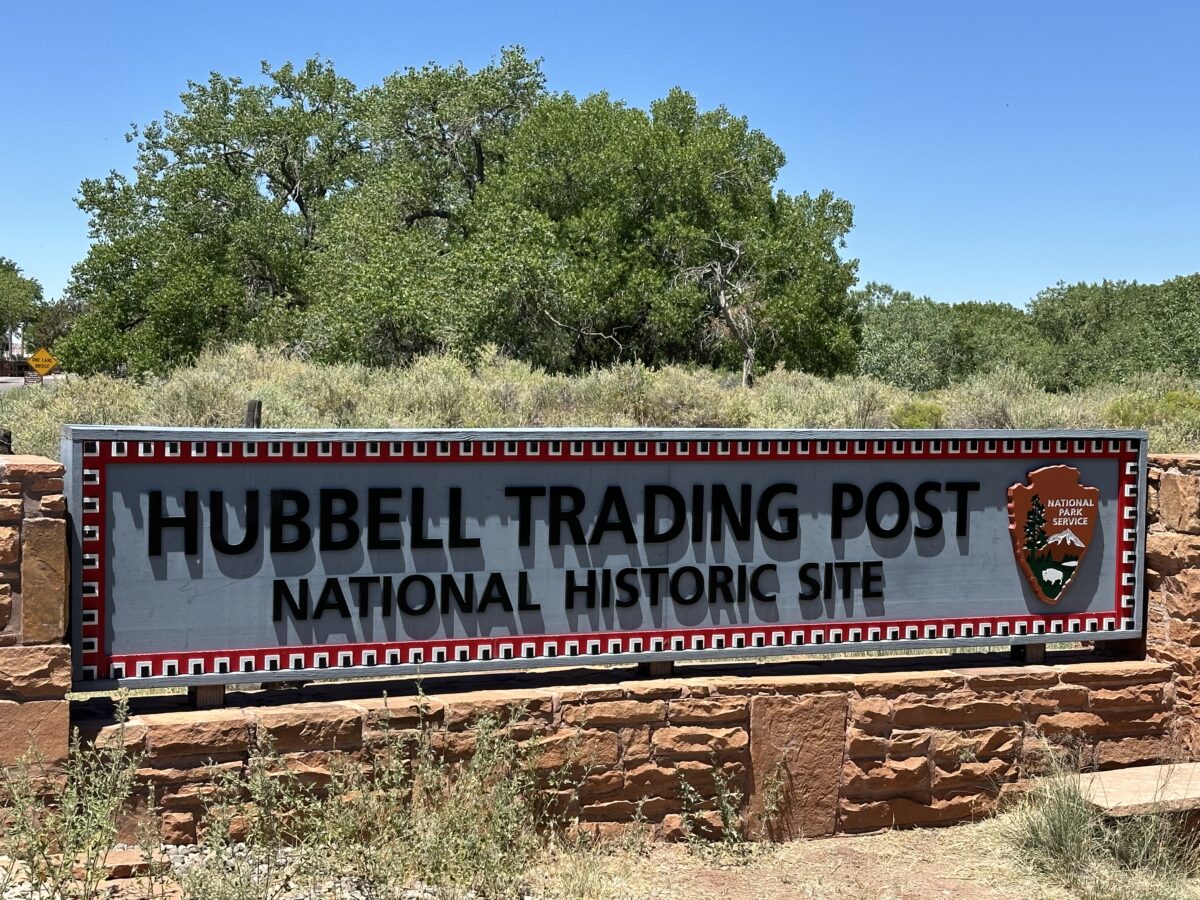Hubbell Trading Post National Historic Site
Located in northeastern Arizona, Hubbell Trading Post National Historic Site is near Ganado – about 20 miles west of Window Rock, Arizona, and 35 miles south of Chinle, Arizona. It is surrounded by Navajo tribal lands.
Navajo’s and earlier native American tribes had occupied this area for centuries due to the dependable water source, fed by natural springs. It was a good place to farm and raise their herds. The Navajos had a thriving community there until they were forced to leave on the “Long Walk” to reservations in New Mexico.
In 1868, they were allowed to return to their homeland only to find their herds decimated and their fields destroyed.
Hubbell Trading Post
This is where J.L. Hubbell came in. He came to the area about 10 years after the Navajos returned. He bought some buildings and started to try to make a living as a trader. But, unlike many other traders, Hubbell brought his wife. They settled; built a ranch and store. He learned the Navajo language and they raised their children there.

The trading post they built did well. At the camps, Navajos had been introduced to many of the things that Hubbell offered – flour, sugar, coffee, canned goods, tobacco, tools, cloth and manufactured items. They needed the types of things that a trading post could offer, especially to supplement the things they could grow.
What they had to trade was initially quite meagre. It took time for them to raise crops and rebuild their herds. They traded handmade items, like pottery, baskets and jewelry, and eventually woven rugs, wool, sheep and lambs. It was years before cash was used at Hubbell Trading Post.
Hubbell’s business became very successful. Tourism introduced by the Fred Harvey Company increased the interest in woven blankets, rugs and crafts. There was also a good market for these types of handmade products in Eastern cities.
As his business grew, Hubbell built up his own freighting operation, initially using oxen and then transitioning to mules and horses, to bring products to the trading post and take trade goods back to market. In good years, Hubbell may have transported as much as 100,000 pounds of wool to market.

The ranch you see today supported this operation; the barn you see today was built to house the animals and the fields around the post grew hay for feed. Later, when the railway came west, Hubbell would buy lambs and sheep from the Navajo and hold them in the barn until they could be herded to the railroad.
Hubbell Trading Post Today
The Hubbell Trading Post lived on long after J.L. Hubbell passed away. In fact, when you visit there today you will be visiting the oldest continuously operating trading post in the American southwest. Three generations of Hubbell children continued to work as traders, and Hubbell family members operated the trading post until it was transferred to the National Park Service in 1967.
The historic trading post is still operational today, as an integral part of Hubbell Trading Post National Historic Site. It is open daily from 8 to 5, and is free to visit. Along with some grocery items and souvenirs, the mercantile sells fine arts and crafts, jewelry, pottery, baskets, and all sizes of beautifully hand woven wool rugs.

Along with the trading post, the 160 acre site includes the original Hubbell family home, barn and outbuildings, farmland and visitor center. We especially enjoyed all of the old photos in the visitor center and the weaving exhibits. They took you through the process of how the women would clean and card the wool, spin the thread, and then weave rugs. It was also interesting to learn more about the Churro sheep, a hardy breed that had been threatened with extermination when the US Army was trying to drive the Navajo off their land.
Be sure to check the website to see what is going on at the trading post. Local Navajos often do weaving and dying demonstrations. They are super interesting. We didn’t realize all of the symbolism in the weavings, nor did we know how the wool was dyed from native plants. Who would have thought that a plant that looked green would yield black dye or one that looked red would give you gold color.

Be sure to take some time to do a self-guided walking tour. Check out the barn and some of the old farm equipment. There are even a few animals that the National Park Service keeps to protect the authenticity of the ranch. If you time it right, you can even visit the Hubbell family home, on a ranger led tour.

Relive the past at Hubbell Trading Post National Historic Site.
Are you trying to visit all the National Parks, or National Park Units?
If your goal is to visit them, one or all, we’d love to help you strategize. Give us a call at (480) 609-3978 or drop us a note here. We always enjoy talking with people who share our passion for visiting these gems of the National Park Service.
#FindYourPark
#SeeAmericaFirst

